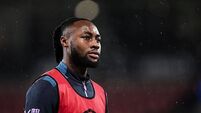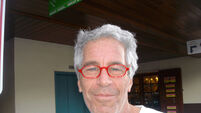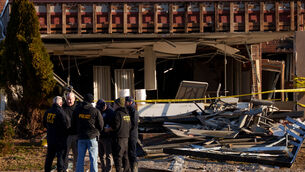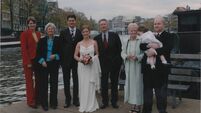Kennedy still an inspirational figure
Forty years later, Kennedy remains an inspirational figure, a president more popular in death than in life.
Politics had brought the 46-year-old president to Texas, a pivotal and worrisome state in his 1964 re-election plans.
At the urging of local politicians, Kennedy ordered the reflective glass shield on the presidential limousine removed for his visit to Dallas on November 22, 1963. With first lady Jackie at his side, Kennedy smiled and waved at the crowds from the back seat.
In front, Governor John Connally and his wife, Nellie, beamed at the Texas welcome.
Just before 12.30pm, the motorcade slipped out of the glass and steel canyons of the commercial area and zigzagged toward Elm Street and a drab, seven-storey brick building.
Then the shots rang out.
A half-hour later, Kennedy was declared dead at Parkland Memorial Hospital.
At 2.38pm, Vice-President Lyndon B Johnson was sworn in as president aboard Air Force One, with Jackie Kennedy at his side.
“There’s still so much sentiment for John F Kennedy and so much of it is coloured by the assassination,” said David Crockett, a political scientist at Trinity University in San Antonio. “He’s the young, attractive, tragic martyr figure assassinated on television, with a wife who’s mourning.”
When people close their eyes, they can still see Kennedy’s three-year-old son, “John John,” bravely saluting his father’s flag-draped coffin.
After a 10-month investigation, the Warren Commission in 1964 concluded that Lee Harvey Oswald alone killed Kennedy, firing shots from the Texas School Book Depository’s sixth floor.
Doubts lingered, however, and in 1978, Congress ordered a committee to again investigate the assassination. The panel largely relied on the recording of a police motorcyclist’s microphone.
The committee’s conclusion: Four shots were fired, with one coming from a grassy knoll. In other words, it concluded, Oswald did not act alone.
But after further studies, the Justice Department in 1988 concluded there was no “persuasive evidence” of conspiracy and formally closed the investigation.
Oswald was killed two days after Kennedy’s assassination, gunned down by Dallas nightclub owner Jack Ruby as he was transferred from one jail to another.
A Dallas jury convicted Ruby of murder in 1964 and sentenced him to death. A further court ruling later set the verdict aside, and Ruby died of cancer in prison in 1967 before he could be retried.
Kennedy’s daughter, Caroline Kennedy Schlossberg, who was four days shy of her sixth birthday when her father died, is the sole survivor of her immediate family.
Jacqueline Kennedy Onassis died of cancer in 1994 and John F Kennedy Jr died along with his wife and sister-in-law in the 1999 crash of a small plane he was piloting.
The crash brought still more pain to a family that dealt first with Kennedy’s slaying, then with the assassination of his brother, Robert, during his 1968 presidential campaign.
Most mainstream historians believe Oswald acted alone. But there are credible dissenters. And the public overwhelmingly believes otherwise, influenced, perhaps, by piles of books, TV shows and movies, such as Oliver Stone’s conspiracy-themed movie JFK in 1991.
Posters for that film carry the tag line: The Story That Won’t Go Away. And that seems like an apt assessment.
Four decades later, more than two million people a year trek to Dealey Plaza to stand at the spot where Kennedy was assassinated.
Interest in JFK has held for almost a half-century, despite revelations about the man and his presidency that might have sunk a living politician. Serial adultery. Heavy drug use for medical problems. The taint of a vote-fixing scandal.
None of it has seemed to shatter the Camelot image - the notion that Kennedy, with his beautiful young wife, swept into the White House on a wave of glamour and good intentions to rival King Arthur and the Knights of the Round Table.
His 1,000-day presidency included achievements. Championing civil rights. The space programme. Facing down the Soviets over the Cuban Missile Crisis and averting nuclear war. And missteps: Escalation in Vietnam. The Bay of Pigs fiasco in Cuba.
But in the end, the political scorecard seems beside the point. Like Elvis, Kennedy has become bigger in death than in life.
Polls show Americans, especially baby boomers, consistently rank him as one of the country’s greatest presidents, neck-and-neck with Abraham Lincoln. Historians place him closer to the middle in presidential rankings.
Three-quarters of those aged 18-29 say they approve of Kennedy as a person, the highest rating given by any age group in a USA TODAY/CNN/Gallup Poll conducted last weekend.
Dallas took a long time to formally recognise the site of JFK’s death. The city was bruised by its negative image after the assassination - 80% of Americans back then blamed the city for the crime.
City hall received reams of hate mail.













